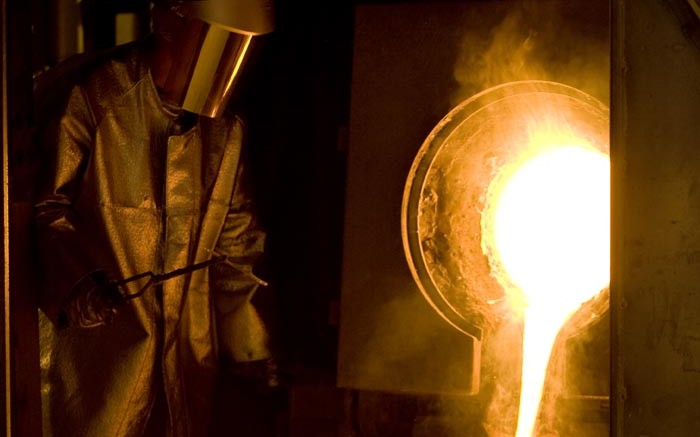Data recently published by Wood Mackenzie illustrates that at US$1,100 per oz. gold, about 10% of current gold mine production is uneconomic on a total cash cost plus sustaining capex basis.
If the gold price slips to US$1,000 per oz. that percentage climbs to 18%, and at US$900 per oz. it rises to 31%, Ryan Cochrane, a senior research analyst at the metals and mining consultancy with a PhD in geology, says in an interview with The Northern Miner from his office in London.
Cochrane also notes that at current gold prices, 40% of project production capability is uneconomic, and that percentage increases to between 45% and 50% at US$1,000 per oz. gold, and to nearly 60% at US$900 per oz. gold.
“If prices get to the US$900 per oz. level, there is going to be a bloodbath,” the analyst says, noting that even if gold falls to US$1,000 per oz., it will likely trigger another round of impairments — a repeat of what happened across the gold industry in 2013.
“If prices fall that low, a lot producers will have to redo their pricing assessments for their reserves,” he says, which resulted in multi-billion dollar writedowns just two years ago.
Gold miners have their reserves set at between US$1,100 and US$1,300 per oz., he explains, so if the gold price falls below US$1,000 per oz., these companies will have to remove marginal ore from their mines and raise the cut-off grade, essentially cherry-picking the best parts of their deposits that will generate the highest return.
“The next couple of years are going to be difficult for gold miners, and at some point you’d need a higher gold price to justify new growth of supply,” Cochrane says, adding that a lot of gold majors are struggling to replace reserves and keep the business sustainable. “The free cash flow is not quite there to develop new greenfield projects or expand existing projects, and return cash per share to shareholders,” he says.
When it comes to comparing what is taking place today in the gold versus copper sectors, Cochrane, a specialist on copper mine costs, points out that copper-mining companies in general are a little bit more comfortable on a cost-curve basis.
“We look at C1 costs and at the moment, the global C1 ninetieth cost percentile for copper is about 200¢ per lb.,” he says. “With prices up at the 240¢ to 245¢ per lb. level, there’s still a bit of head room, so copper miners are a lot more comfortable than gold miners in the current pricing scenario.”
That said, there is still a drive among copper producers to focus on core assets, divest non-core assets and advance only the projects with the highest return on investment, he says. There also have been a couple of moves by copper miners to adjust their mine plans, although it has not happened to the same degree as it has in the gold sector, he maintains.
“That’s probably due to the fact that copper miners have generally been a little bit more conservative on how they have priced their reserves, so have yet to incur any major impairments, compared to what has been seen in the gold sector,” he argues.
Cochrane and his colleagues released an analysis of value creation in the mining sector that revealed a long-term divergence between copper and gold producers.
Their research showed that in 2000, gold miners enjoyed a 50% market premium over copper miners. But in June 2015, the market priced the gold mining sector “just a fraction above its net tangible worth.”
The analyst says that “in contrast, at the same juncture, copper miners commanded a 25% premium over gold miners on a price to net worth basis — somewhat surprising, given the broad sell-off in base metal equities from their peak in 2011,” the analysis states.
Cochrane explains that copper miners have had higher operational and residual cash flow margins than gold miners, even though copper prices over the last 14 years have underperformed gold prices. His numbers illustrate that the average dividend yield for a selected copper-mining population was 4% over the 14-year period, while it was 1% for selected gold miners.
The divergence, he says, can be attributed to several factors, including better capital allocation in the copper sector. And unlike in the gold sector, where companies have relied more heavily on equity or debt financing, copper miners have more often financed project development through internal cash flow.
“Gold miners aggressively pursued production growth and hedged significant portions of their production at relatively low gold prices, effectively missing large portions of the gold market bull run,” the analysis states.
In addition, the Wood Mackenzie team notes that the quest for production growth, particularly in the last years of the bull market, led many gold miners to develop increasingly marginal projects “and paid excessive premiums for acquisition-driven production growth.” This was exacerbated, the report states, “by gold-mining companies maintaining large dividend payments despite recording cumulative net losses over the period, with payouts funded partly through external financing.”




Be the first to comment on "Gold price fall may trigger another round of writedowns"